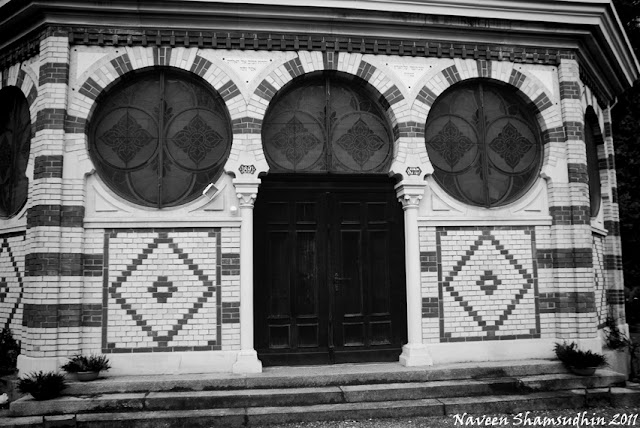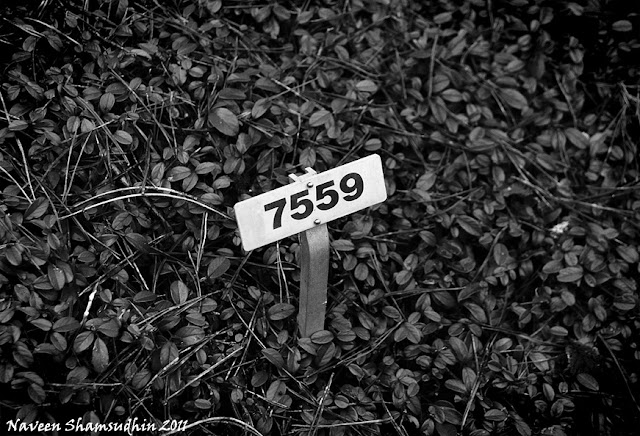"... He is buried on the side of a mountain that overlooks the city of Zurich.". The biographical memoir of physicist Felix Bloch concludes with this esoteric note*. Enlightened quantum-spiritually after our recent course in quantum mechanics at ETH, Dan and I had to find and pay homage to this Nobel Prize winner and former student of physics and mathematics at our university.
As a student, Bloch regularly attended the physics colloquia, held jointly by ETH and the University of Zürich , where stalwarts like Peter Debye and Erwin Schrödinger discussed and lectured on the recent advances in theoretical and experimental physics in Europe. He recalls the day when Debye asked Schrödinger to express his views on the strange new hypothesis put forward by de Broglie on wave-particle duality. Schrödinger gave an excellent summarization of how de Broglie's wave hypothesis could be used to get the exact atomic quantization rules developed by Niels Bohr and Arnold Sommerfield, in terms of integral multiple of waves that can fit a spatial atomic orbit. Terming this description as childish, Debye asked, "If it's a wave, there's got to be a wave equation". A few weeks later, at the same colloquia, Schrödinger announced, "My colleague Debye suggested that one should have a wave equation; well I have found one!". This talk formed the basis for the first of a series of papers in Annalen der Physik, and was titled Quantization as Eigenvalue Problem. Five of the individuals mentioned in this short paragraph were awarded the Nobel Prize.
Such was the epoch, that Felix Bloch lived, studied and worked in, witnessing the progressive upheaval of physics and a quantum leap in our understanding of the atomic world. After his studies in Zürich, he went to Leipzig, to join as the first graduate student of Werner Heisenberg. Later, he found himself in the beurlaubungen compilation circulated by John von Neumann, of scientists in Nazi-Germany who were "forced to leave, and who's name was on The List". This may have been the basis for the professorship at Stanford University, and Bloch left European academia, emigrating to the U.S in 1934. Felix Bloch received the Nobel Prize in Physics in 1952, for his work in nuclear magnetic resonance.
The plan was drawn up. Find him, and find him fast.
With no other clue than the cryptic statement in his memoir, and the fact that Felix Bloch was Jewish, we set out with the addresses of the twenty or so graveyards in Zurich. The city center of Zurich lies nestled between several hills, and most of the friedhofs (german for cemeteries) were located on hillsides overlooking the city. So much for the help from the note! Maybe he was an atheist, but the chances of him being buried in a jewish friedhof were high. We decided to check the twin jewish cemeteries at Friesenberg. A short walk from the Friesenberg railway stop on the S10 line going up to Uetliberg, we arrived at the Israelitischer Friedhof (Unterer Friesenberg). A frosty January morning, there was not a single soul in the cemetery. We noticed a wooden hoarding of the Orientierungsplan (Direction Plan) , damaged and decaying, the moisture seeping in through the broken glass paneling.
Next to the mausoleum-like building, which we later learned to be the abdications hall (die Abdankungshalle ) , we found a register with names, grave numbers and the dates of death.
Dew drops clung onto the thin plastic films which enclosed the printed name lists. We realized that Bloch seemed to be a popular Jewish surname, noticing three pages of Blochs. From the dates of death printed alongside each name, it was clear that there had been no burials after the mid-1950s, most probably due to lack of space, we concluded.
Dejected, but resilient, we decided to continue our search in the cemetery at oberer Frieseberg.
This cemetery seemed to be better off than the dilapidated conditions at unterer Friesenberg. There seemed to be signs of life and activity at the cemetery office. We noticed two workers smoking, taking a break off from work, while another one walked away, carrying a huge pair of shears.
We found the register with the name list at the cemetery office. With a sense of impending thrill, we hurriedly flipped the pages to the surname Bloch. There it was! Right in the center of the page, "Bloch, Felix 7559 10.09.1983" .
Wasting no time, we found the Friedhof Orientierungsplan, and identified the plot marked N, which housed the graves, marked from 7509 to 7769.
Gloomy excitement is the only description of how we felt, as we swiftly walked past eerie rows of tombstones with their cryptic hebrew epitaphs.
The hebrew equivalent of here lies is פה נקבר (po nikbar) and its abbreviation פנ (p n) is inscribed on most tombstones.
Walking along the graveled pathway, there it was, a marker with the grave number 7559, poking out from the dense bush of creepers.
A simple tombstone with no lithographic frills, the epitaph stated " Here lies...Felix Bloch...1905-1983 ". There was no embossed Magen David (Star of David) nor the hand symbol on the stone. A fresh mound of snow lay around, but no cut flowers, wreaths, yahrzeit candles, nor any visible signs of bereavement and care.
To honor his memory and pay respects, we
wished to place something beside the grave. As we looked around, we noticed small pebbles and
stones neatly piled on top of the surrounding tombstones. Some
of the tombstones, had one or two of them, while others had many, placed with no apparent ordering on the narrow stone ledge. We sensed
the importance of these stones, but did not know the exact reason why
they were kept there.
We picked up three pebbles and neatly arranged them on top of the tombstone, to remember and honor the memory of the former student of ETH and Nobel Prize winner, Felix Bloch.
* www.nasonline.org/site/DocServer/Bloch_Felix.pdf?docID=74047 Felix Bloch (1905 - 1983) - A Biographical Memoir by Robert Hofstadter ( published by the National Academy of Science )













Well done QM mates !
ReplyDeleteThe text and the photos are very beautiful, it reads very nicely !
You have to publish new adventures !
Bises
Great work ..
ReplyDeleteWish i was involved in this kind of a pursuit..
Brilliant photography..Black and white suits the article excellently, however i was wondering how the photos look in colour, especially felix bloch's tombstone with snow around,the photo with of all those tombstones in snow, the pebbles, and even the decaying hoarding
Those Hebrew inscribed graves look amazing.
How long did all this take?
@Pauline : Thanks! More gravehunts coming soon!
ReplyDelete@Srikanth : Thanks mate! The mood is sombre, its cold, its foggy, and there is not much color in the air. Its grey. The color pictures are not very different from the B&W.. It didnt take too long... 2 days of preparation.. :)
you are a g8 blogger mate keep it up
ReplyDeleteNice.... beautifully written with good artistic touch of a amateur photographer or indeed professional photographer :)
ReplyDeleteThank you. Different from flowers, rocks remain (in memory), just like the buried person. All the best. G-d bless you <3
ReplyDelete